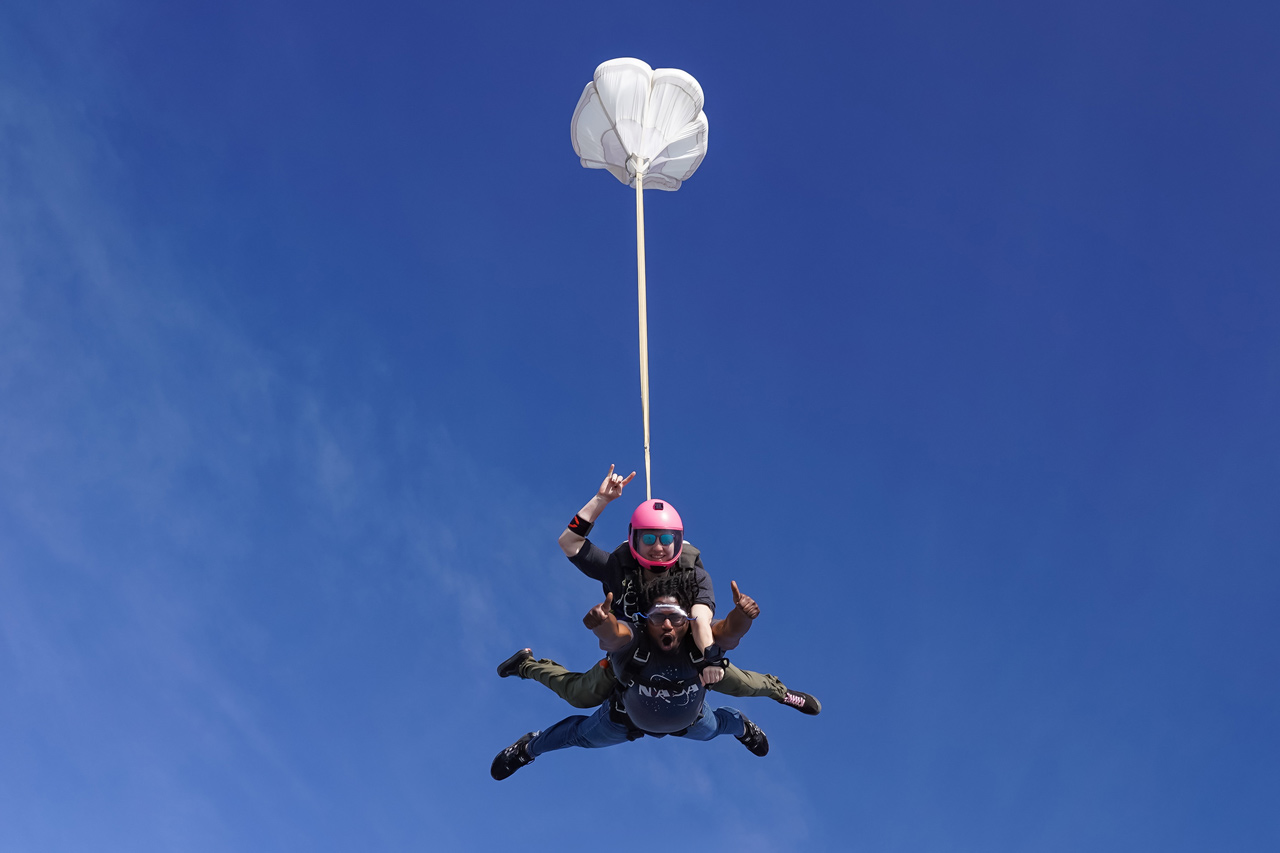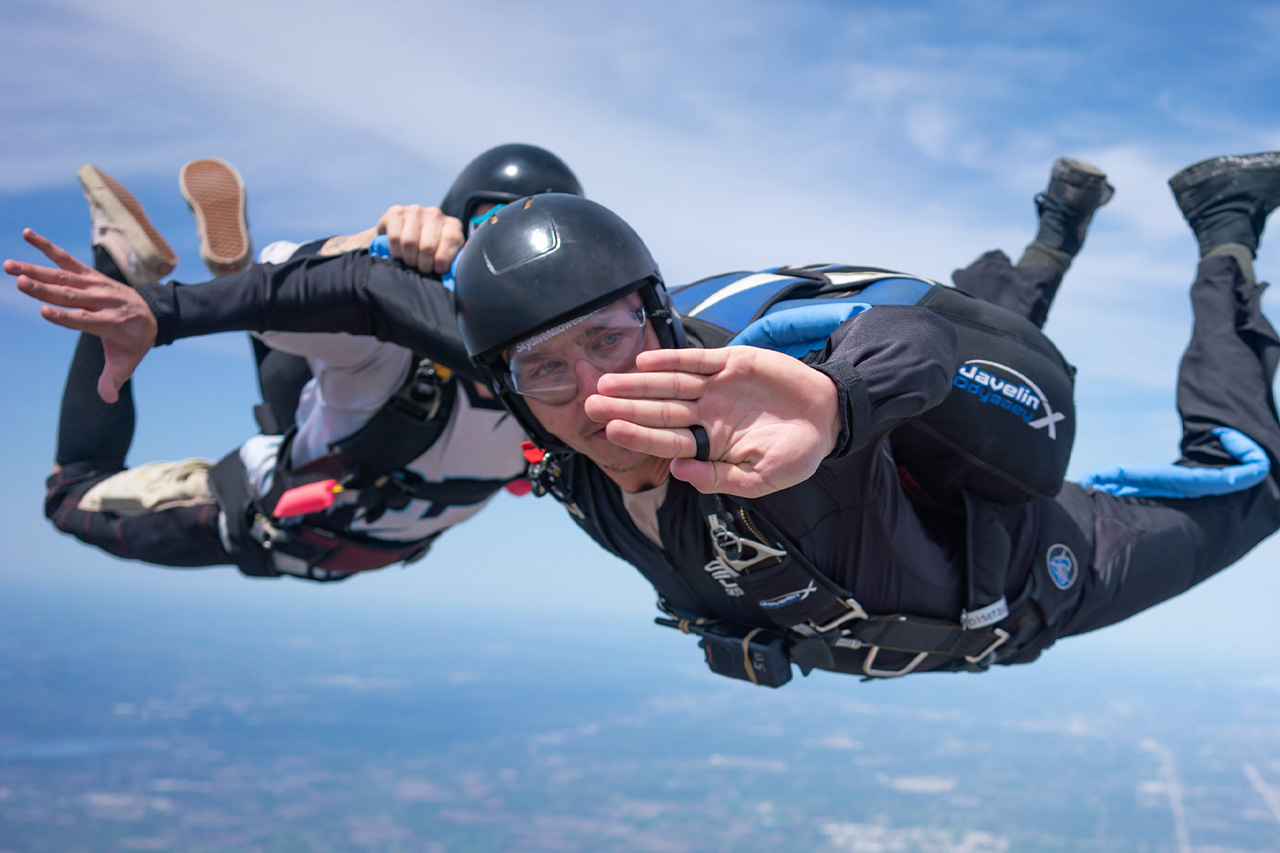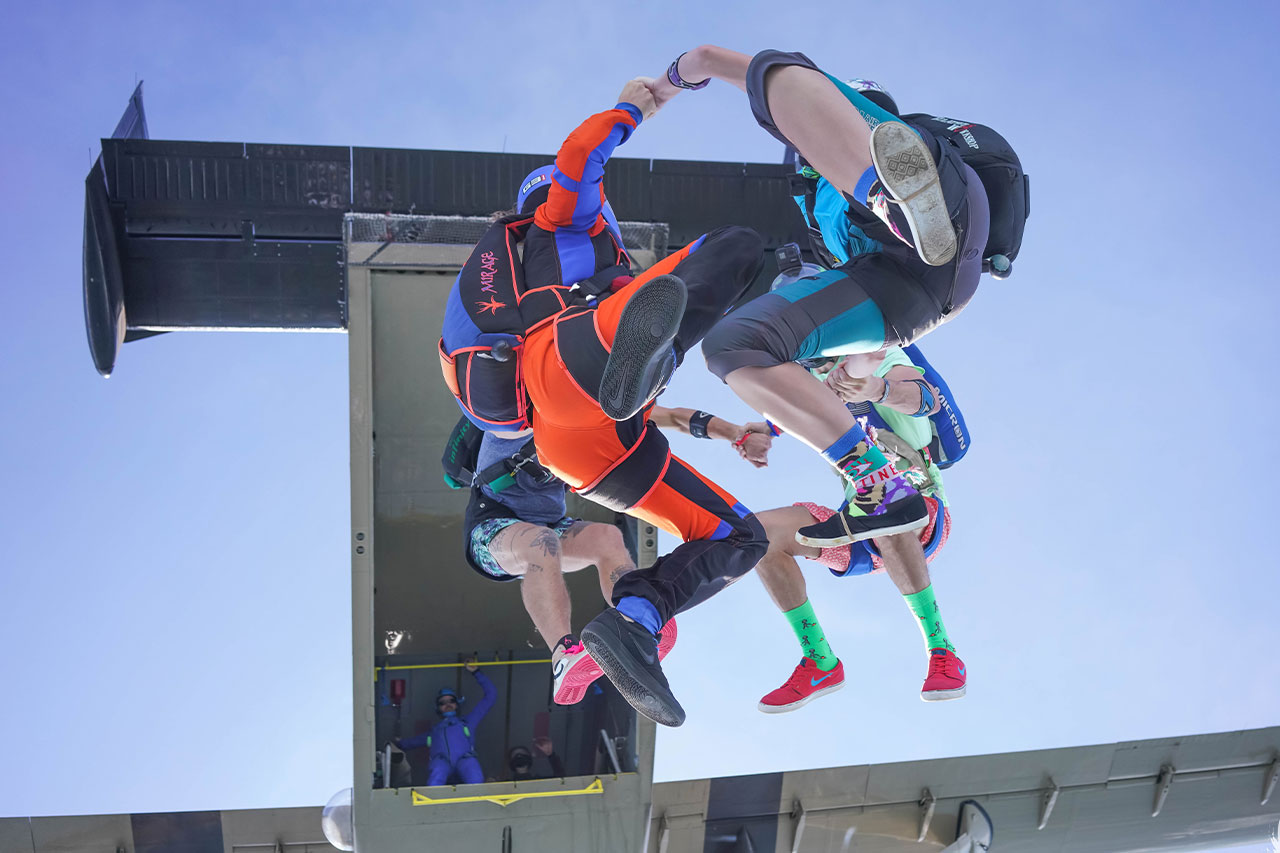What Is Terminal Velocity?
General
Posted by: SKYDIVINGDOTCOM
2 years ago
At terminal velocity, human “monkey minds” – no matter how relentlessly chatty they are on the ground – tend to clam right up. You’re plummeting towards the earth, so it’s not realistic that you could think about anything else … let alone wonder, “How fast am I going, and what’s happening to me up here from the standpoint of physics?”
It’s a deeper question worth considering – and since it’s nearly impossible to address in situ – let’s dive into right here on the ground. What happens to a human at terminal velocity depends on a number of factors we’ll soon go into. In that classic belly-to-earth pose we all know and love (and stay in during freefall as a tandem skydiver), you’ll reach a terminal velocity of around 120 miles per hour a few seconds after leaving the plane.
But that answer doesn’t get into the good stuff, now, does it?

Speed, Meet Balance
Terminal velocity is, in essence, Mother Nature’s “autobahn speed limit” for falling objects: the point where it’s not possible to speed up anymore. You’re going really, really fast, but at a constant speed.
This magic number is determined after a number of variables are taken into the balance: how heavy you are; the position you take with your body; what shape you’re in (quite literally – the actual shape that is your meaty manifestation on this physical plane); and how bumpy and/or flappy your surface is (what with the jumpsuit or the tracksuit or the tutu). Oh: and don’t forget the air around you. The density of the air and wind speed play a role too.
Breathing at Terminal
At terminal velocity, while you’re actually going like gangbusters, the world … well … isn’t. In fact, it pretty much…stops. For some precious moments, the universe presses the pause button. You’re not going faster; you’re not slowing down. You’re just hanging out, soaking in the view, feeling the hug of the air as you rest for a moment between the sky above and the ground below.
This context helps to answer the question “can you breathe while falling at terminal velocity?” Not only can you breathe at terminal velocity, but it’s the perfect time to breathe.
Here, for a strangely still moment in the middle of everything, when you breathe in, you take in balance, possibility, adventure, and renewal. We therefore recommend that you take a very deep breath (or 10) at terminal velocity.

The Need For … You Know
Now we know what terminal velocity feels like in belly-to-earth orientation, let’s add some more variables. Let’s say you’re a licensed skydiver and a total speed demon, then what does it feel like to reach terminal velocity? Really, really good. Why? Because you can smash that gas pedal once you have your solo skydiving license.
Different body positions result in a different terminal velocity. Skydiving isn’t a one-size-fits-all deal, as we know. The terminal velocity of a human head first is about 60 mph faster than the terminal velocity of a skydiver falling belly-to-earth (which you’ll be required to do until you’re a licensed jumper).
You can even go for a speed record. Speed skydiving is a discipline of the sport that ratchets that number well over 300 mph (and regularly up past the fastest speed a street-legal car can deliver). Yikes, right?!

Class Is In Session
Okay, so how fast do skydivers fall? Like: in numbers?
For a handy terminal velocity calculator, mix a bit of physics in with your skydiving. Terminal velocity is calculated using the formula:
F_d = mg
Translation: “F_d” is the drag force; “m” is the skydiver’s mass; “g” is the pull of gravity.
As the skydiver falls faster, the drag force gets stronger, eventually balancing the gravitational pull and capping the skydiver’s speed. Science!
Fun Fact: Terminal velocity isn’t the same as freefall speed. If you’re falling through still air, they match up. But if you’re zooming through moving air that counteracts your drag, your freefall speed can be even faster than terminal. Crazy, right?
Going Terminal
Terminal velocity is a big deal in skydiving. We don’t just mean the complicated nature of the factors that go into it – we’re referring to the not-far-from-spiritual experience of occupying that fast-falling, still-minded space.
The next time you’re hurtling towards the ground from many thousands of feet above a landing area, perhaps a single thought might intrude into that paradoxical space: a thought of gratitude that such a thing exists, and that you are lucky enough to experience it.
Ready to experience the mind-blowing sensation that is human terminal velocity? Find the perfect “skydiving dropzone near me” and get your knees in the breeze! Blue skies.
Categories:
You May Be Interested In:
DZ Locator
Find a skydiving center near you.




